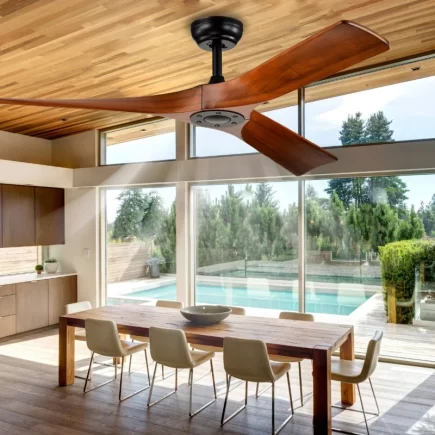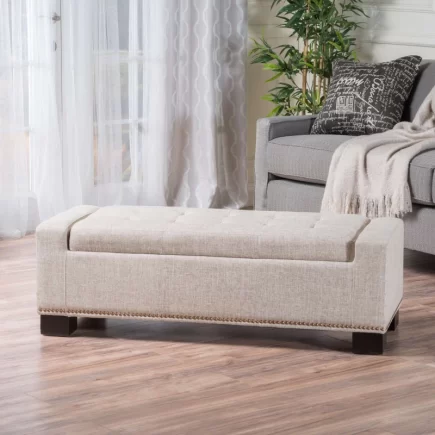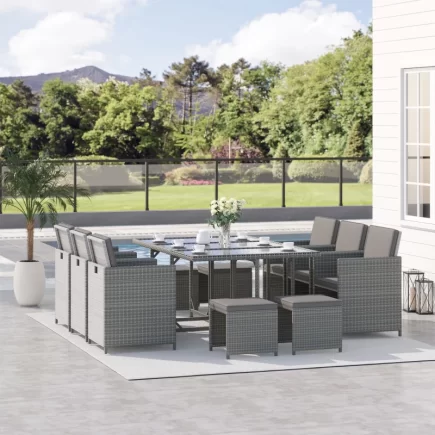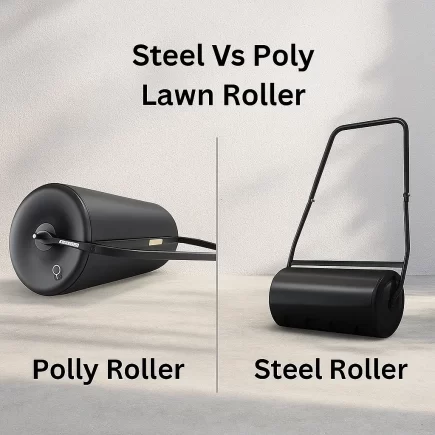Spending an evening around a traditional fire pit often comes with an unwelcome companion smoke. Whether it’s the sting in your eyes, the smell clinging to your clothes, or constantly shifting your seat to avoid the wind, smoke can turn a relaxing night into a nuisance. Smokeless fire pits solve this issue by offering a cleaner, more efficient fire that burns hotter and emits minimal smoke.

This guide explains how smokeless fire pits work, the engineering behind their smoke-reducing design, and the key considerations when choosing one for your outdoor space. Whether you’re a seasoned camper or just looking to upgrade your backyard, understanding the mechanics behind these fire pits will help you make an informed decision.
What Makes a Fire Pit Smokeless?
The term “smokeless” is somewhat of a misnomer. No wood-burning fire pit is completely smoke-free, but a smokeless fire pit significantly reduces visible smoke by promoting near-complete combustion of the fuel.
The Core Principle: Complete Combustion
Smoke is a by-product of incomplete combustion, when wood or fuel doesn’t burn fully, it releases particles and gases such as carbon monoxide, volatile organic compounds (VOCs), and water vapor. Smokeless fire pits are engineered to increase combustion efficiency, thereby reducing the amount of unburned material that creates smoke.
Key Engineering: Airflow and Combustion Mechanics
1. Double-Wall Construction
At the heart of most smokeless fire pits is a double-wall structure. Between these inner and outer walls is a hidden channel that allows air to circulate.
- Primary combustion occurs in the base of the pit, where oxygen enters through vent holes at the bottom and feeds the fire.
- As the fire heats up, it draws air into the space between the walls. This air is heated as it rises.
- Secondary combustion happens when this superheated air is reintroduced into the fire chamber through upper vents near the top of the burn area. This hot oxygen reignites smoke particles, burning them before they exit the pit.
This two-stage combustion process drastically reduces smoke and increases heat output.
2. Directed Airflow
The design ensures that fresh oxygen is continuously drawn in from below and directed up through the fire. This vertical airflow:
- Fuels the fire more effectively
- Eliminates most visible smoke
- Promotes cleaner, higher-temperature flames
Types of Smokeless Fire Pits
While all smokeless fire pits aim to reduce smoke through efficient airflow and combustion, they differ in fuel type and functionality. Here’s a breakdown:
Wood-Burning Smokeless Fire Pits
These pits use traditional logs, usually seasoned hardwood or sometimes wood chunks. The smokeless effect comes from enhanced airflow design (like double walls and secondary combustion) that burns the wood more completely, producing less smoke.

Why Choose Wood-Burning Smokeless Fire Pits
Best for: Those who want a real, crackling campfire experience. Ideal for backyards or camping when ambiance matters.
Benefits
- Produces more heat
- Looks and feels like a traditional fire
- Great for roasting marshmallows or cooking
Drawbacks
- You need to store dry wood
- Requires regular ash cleanup
- Heavier and often less portable
Choose this if you value the sensory experience of a real fire and don’t mind a bit of maintenance.
Pellet-Fueled Smokeless Fire Pits
Instead of logs, these fire pits burn wood pellets small, compressed bits of sawdust. Pellets burn efficiently because they are dry, uniform, and tightly packed. The fire starts quickly and stays hot due to consistent airflow and secondary combustion.

Why Choose Pellet-Fueled Smokeless Fire Pits
Best for
Users who want portability and convenience. Popular with campers, tailgaters, and those with smaller outdoor spaces.
Benefits
- Starts quickly
- Very efficient and clean-burning
- Lightweight and easy to carry
Drawbacks
- Needs refilling more often (shorter burn time than logs)
- Less heat output than large wood fires
Great for on-the-go use or small spaces. Minimal smoke and very efficient, but needs more frequent pellet refills.
Gas-Powered Smokeless Fire Pits
These use propane (via tanks) or natural gas (via a built-in line). There’s no wood or pellets; instead, gas is ignited and controlled through burners, creating a steady flame. Since gas burns cleanly, there’s almost no smoke by default.

Why Choose Gas-Powered Smokeless Fire Pits
Best for
People who want a low-maintenance fire with zero cleanup. Great for patios or permanent outdoor setups.
Benefits
- Instant ignition
- No ash or embers
- Flame height and heat are adjustable
Drawbacks
- Lacks the smell and crackle of real wood
- Needs a gas source (propane tank or installation)
- Less heat compared to wood fires
Ideal for those who prioritise ease of use, control, and cleanliness over traditional fire aesthetics.
Gas Fire Pit Tables: Style Meets Function
Gas fire pit tables combine the convenience of smokeless flame with the functionality of a patio table. Powered by propane or natural gas, they double as stylish furniture for dining, lounging, or entertaining.

Why Choose a Gas Fire Pit Table
Best for
Homeowners who want an elegant, all-in-one solution for warmth, ambiance, and practicality on patios or decks.
Benefits
- Dual-purpose design: Functions as both a fire feature and a usable tabletop when not in use
- No smoke, no mess: Uses gas, so there’s zero ash and almost no maintenance
- Customisable aesthetics: Available in modern, rustic, or luxury designs to suit any outdoor décor
Drawbacks
- Not portable: Heavier and typically designed for permanent or semi-permanent installation
- Needs gas line or tank: Must be set up near a gas source or regularly refilled
Ideal for
- Patio dining areas
- Outdoor lounges or gazebos
- Users who want minimal setup and maximum style
Comparison Table
| Type | Fuel Type | Best For | Pros | Cons |
| Wood-Burning | Seasoned logs | Authentic fire lovers | Real flames, high heat, crackling sounds | Needs wood storage & ash cleanup |
| Pellet-Fueled | Wood pellets | Portability, quick setup | Fast start, efficient burn, compact | Shorter burn time, less ambient heat |
| Gas-Powered | Propane/natural gas | Low-maintenance convenience | Instant flame, no ash, flame control | No wood scent or crackle, needs fuel setup |
Components That Contribute to Smoke Reduction
- Base vents: Pull cool air into the fire pit to fuel the primary burn.
- Inner burn chamber: Main area where the fuel ignites and burns.
- Airflow channels: Move air between the walls, heating it before it reaches the flame.
- Top vent holes: Release preheated air back into the flame for secondary combustion.
- Ash pan or tray: Collects leftover ash, keeping airflow clear and cleanup simple.
Fuel Efficiency and Heat Output
The hotter and cleaner a fire burns, the less waste it produces. Smokeless fire pits are designed to maintain high temperatures that facilitate:
- Efficient fuel use: More heat from less fuel
- Consistent heat distribution: Warmer surroundings with less fuel added
- Lower residue: Reduced soot and ash formation
For wood-burning models, using hardwoods such as oak, hickory, or maple increases combustion efficiency and reduces smoke even further.
Safety Considerations
Smokeless does not mean risk-free. Here are critical safety features and practices:
- Stable Base: Prevents tipping, especially on uneven surfaces
- Heat-Resistant Materials: Most pits use stainless steel, carbon steel, or cast iron to withstand extreme temperatures
- Clearance: Always maintain a safe distance from flammable materials, including overhanging branches or structures
- Spark Shields: Some models include spark guards to contain embers, especially in windy conditions
FAQS
1. Do smokeless fire pits really work?
Yes, they significantly reduce visible smoke by promoting cleaner, more complete combustion. While not 100% smoke-free, they’re far more efficient than traditional fire pits. Proper use and dry fuel are key to performance.
2. Where does the smoke go in a smokeless fire pit?
Smoke is redirected inside the pit and ignited again in the secondary burn zone. Instead of rising as visible smoke, it gets consumed in the flame. What little remains is minimal and mostly vapor.
3. Why does my smokeless fire pit still produce smoke at the start?
Initial smoke is normal as the fire builds and heats the internal air channels. Once the secondary combustion starts, smoke drops sharply. Ensure dry fuel and good airflow for quicker results.
4. Can I use wet or green wood in a smokeless fire pit?
No, moist wood prevents complete combustion and produces heavy smoke. Always use dry, seasoned hardwood for efficient, low-smoke burning. Damp logs will negate the smokeless effect.
5. Is it safe to use a smokeless fire pit indoors or in an enclosed space?
No, these fire pits are designed strictly for outdoor use. Even with reduced smoke, they emit carbon monoxide and need ample ventilation. Never use them in enclosed or semi-enclosed areas.

























